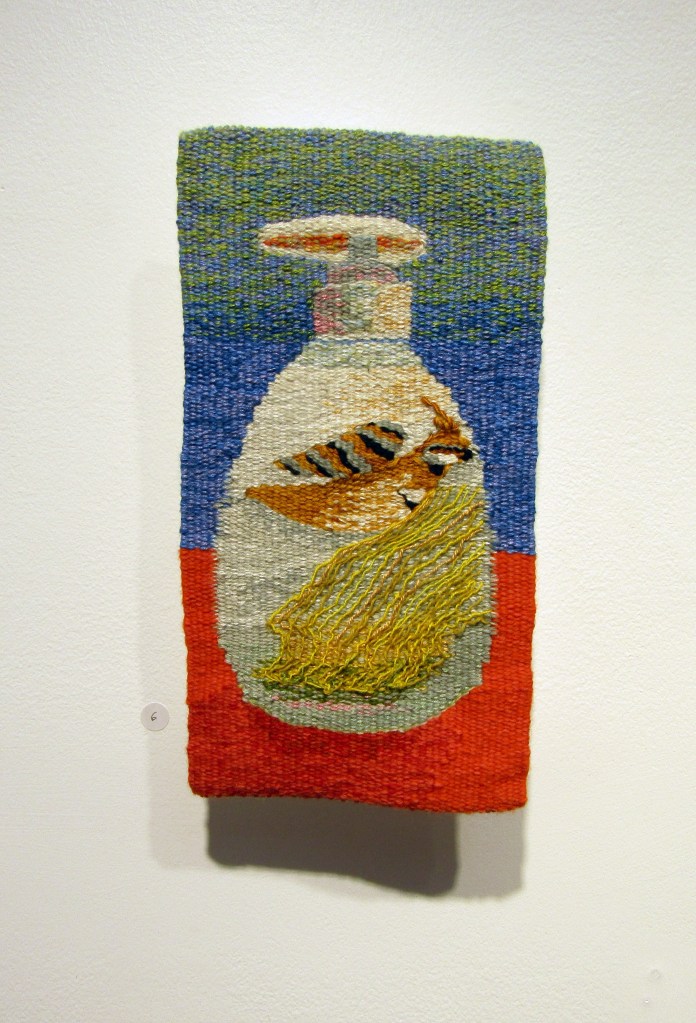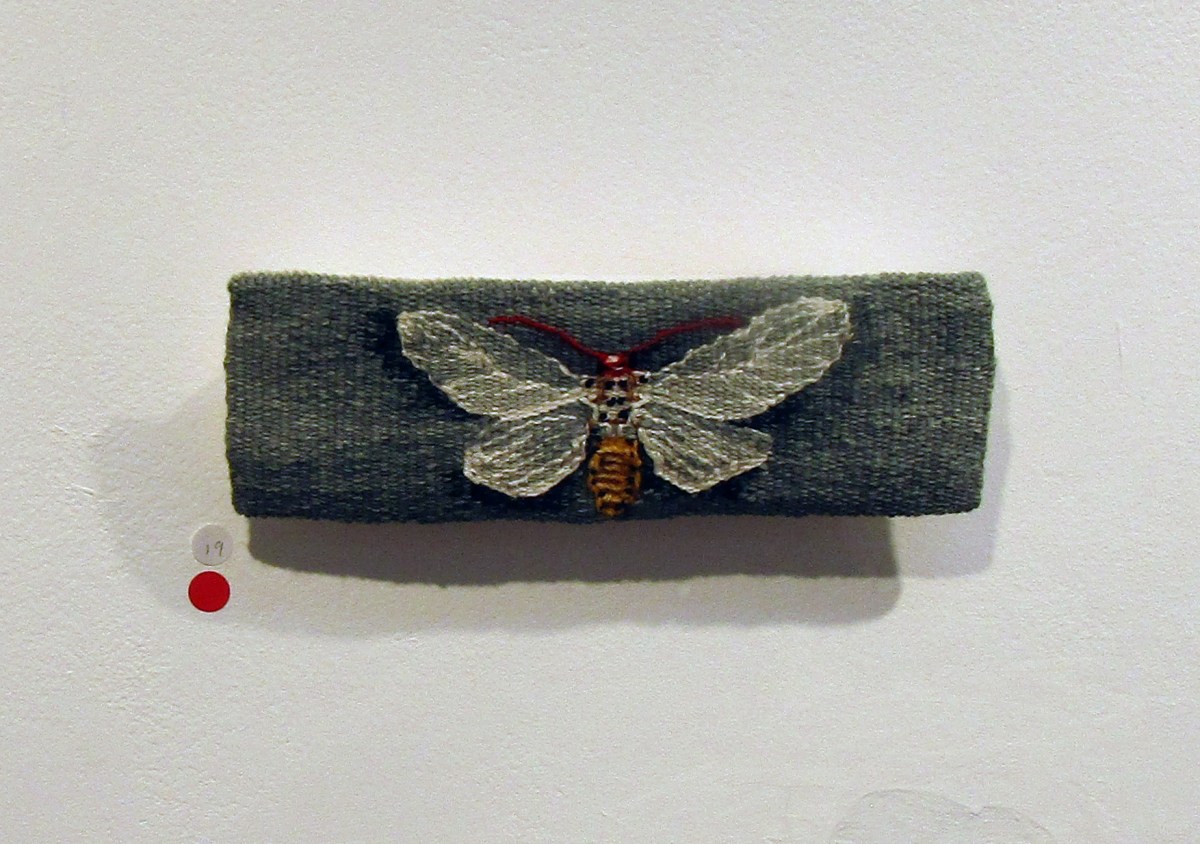An encounter with tapestries in Darwin is the first of a number of ironies offered by Short Shelf Life, depicting flora, fauna and vessels. They are less memento mori and more product photography in aesthetic composition. The species are by and large ‘of least concern’ in conservation status. The bottles are of the plastic variety.
Yet the careful eye and hand of the artist imbue significance to her subjects and objects, which are either endemic to the Northern Territory ecology or ubiquitous to households worldwide. Of the 42 artworks, 35 were painstakingly painted and woven by Suzanne Knight during her residency in the preceding three months.
Knight lived in Darwin between 1999 and 2004. The former head of the printmaking department at Charles Darwin University first tried her hand at weaving in a week-long workshop at Sturt Gallery and Studios in Mittagong. It was run by her Australian National University colleague, Valerie Kirk. Knight’s long-standing curiosity would flourish into a contemporary craft practice under the guidance of this internationally renowned weaver.
Perhaps reflective of her background as a lithographer, she applies the technique to depict patterned surfaces. In this exhibition, the examples include ceramic cups adorned with Australian flora, such as Banksia Tea (2022) and detergent bottles embellished with fauna, like Dire Consequences – Torresian Imperial Pigeon and Palm Fruit (2023).
The pairing of the latter, with the gouache Contained V – Torresian Imperial Pigeon (2023), reveals part of the process engaged by Knight. Vibrant palettes blended into nuanced tones, like paintings, are characteristic of the Gobelins tradition of which the Australian Tapestry Workshop is a bastion. Kirk worked there shortly after graduating and emigrating from the UK. The technique, which entails weaving dyed yarns on a high-warp loom using bobbins, was established in France during the reign of Louis XIV.
Knight achieves her gentle gradations by weaving yarns she has spun together from existing colours. In Ocean Floor (2022) kelp appears to be embroidered onto a tapestry of a plastic soap dispenser using straight Gobelin stitch. Making reference to brands like Dove, the exhibition is littered with depictions of these domestic forms. They provide substrates in a number of other paintings and tapestries including Contained III – Spinifex Pigeon (2023) and Messenger III – Spinifex Pigeon with Spinifex Grass (2023).

An unusual installation method emphasises the objecthood of a few tapestries. They are affixed proud, with their edges overhanging, onto white frames as opposed to being stretched over them. The textile parchments are likely to appeal to visitors as they acclimatise to the air-conditioning.
The exhibition period unwittingly falls during the transition between dry and wet seasons. The intense clamminess has commenced but the rain has not precipitated. This series could be a call to action to audiences to cease washing their hands of the environmental consequences of their choices.
Knight has also depicted endemic moths and locally grown fruit. The treatment of the subjects prolongs what may have otherwise been fleeting encounters. Likewise, the objects decompose in the Northern Territory heat. Whereas each moth tapestry was laboured upon in the Tactile Arts studio over three work days, or approximately 24 hours, three of the Sunday Morning Market series were completed during a visit to Darwin in the dry season of 2022.
Read: Exhibition review: Tools For After, Fitzroy Town Hall
Not unlike the characters in the fairy tales that had gained popularity in France by the 17th century, the journey of Knight from Darwin to Canberra and back again appears to have reaped rewards for the community. There is a wryness about the incongruities of the medium with both the subjects Knight has chosen to depict and the climate in which the tapestries are being shown.
Absorbed are attributes of the Northern Territory in rich colour and texture. Knight effectively captures the ephemeral nature of all life in the region, regally extending the “shelf life” of her objects. Through a selection of the artworks, she calls upon her audience to do the same for her subjects through their decisions as consumers.
Short Shelf Life by Suzanne Knight is on view at Tactile Arts, Darwin until 22 October 2023; free.
This review is published under the Amplify Collective, an initiative supported by The Walkley Foundation and made possible through funding from the Meta Australian News Fund.





